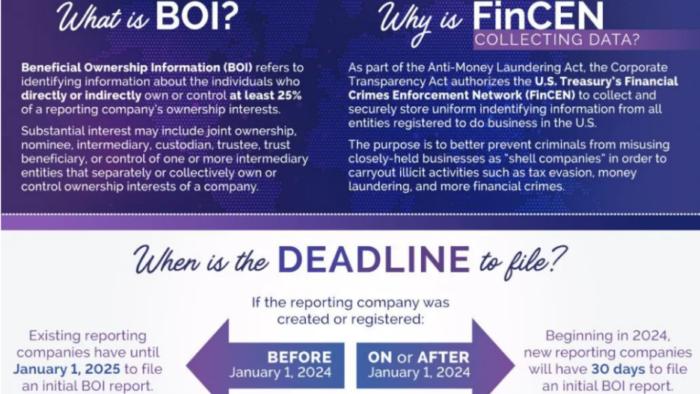An individual retirement account (IRA) allows you to save money for retirement in a tax-advantaged way. An IRA is an account set up at a financial institution that allows an individual to save for retirement with tax-free growth or on a tax-deferred basis.
Not everyone has access to an employer-sponsored retirement plan. Even if you do have a retirement plan through work, like a 401(k), you may want to save additional money beyond the annual 401(k) contribution limits. If that’s the case, some of the best retirement plans for saving on your own are Individual Retirement Accounts (IRAs) and annuities.
There are several types of IRAs available:
| Types | WHO IS IT BEST FOR? | ELIGIBILITY | KEY ADVANTAGES |
| Traditional IRA | People who’d like to save on their own or supplement their retirement savings. | Any individuals with taxable income. | • Contributions may be tax-deductible. • Earnings grow tax-deferred. |
| Roth IRA | People who want tax-free withdrawals in retirement. | Any individuals with taxable income who earn $140,000 or less per year (or $208,000 if married filing jointly). | • Withdrawals and earnings are tax-free. • You can withdraw your contributions before retirement without penalty. |
Traditional 401(k) | Employees of for-profit companies. | Qualifying employees designated by employer. Federal requirements determine who employer must offer plan to. | • Contributions are made on a pre-tax basis. • Earnings grow tax-deferred. • Some employers match your contributions. |
| Roth 401(k) | Employees of for-profit companies. | Qualifying employees designated by employer. Federal requirements determine who employer must offer plan to. | • Income earned on your contributions is tax-free. • You can make withdrawals tax-free when you retire. • Some employers match your contributions. |
| SIMPLE IRA | Small businesses. | Small businesses without access to another retirement plan. | • Employee contributions aren’t required. • Employee is always 100% vested. • Employer contributions are tax-deductible. |
| SEP IRA | Small businesses and self-employed individuals. | Any small business with one or more employees or anyone with freelance income. | • Higher contribution limits than other IRAs. • Only employer makes contributions. • Contributions are tax-deductible as a business expense. |
More Details on each type of retirement investment Option:
Traditional IRA :
- An upfront tax break of up to $6,000 in 2020 and 2021, plus an extra $1,000 catch-up contribution if you’re age 50 or older: Contributions may be deductible, thus lowering your taxable income for the year. It all depends on your current income plus whether you or your spouse has a workplace retirement plan.
- Investment earnings are not taxed as long as the money remains in the protection of the account.
- Withdrawals in retirement are taxed at your tax rate at that time.
- Best for : Those who are in a higher tax bracket now than they think they’ll be in during retirement, as well as workers who do not have access to (or are not eligible to contribute to) a workplace-sponsored retirement plan. Here is our rundown of the best IRA accounts.
2021 — You are covered by a retirement plan at work |
Filing Status | Modified adjusted gross income (MAGI) | Deduction Limit |
Single individuals | ≤ $66,000 | Full deduction up to the amount of your contribution limit |
> $66,000 but < $76,000 | Partial deduction (calculate) |
≥ $76,000 | No deduction |
Married (filing joint returns) | ≤ $105,000 | Full deduction up to the amount of your contribution limit |
> $105,000 but < $125,000 | Partial deduction (calculate) |
≥ $125,000 | No deduction |
Married (filing separately)* | | |
< $10,000 | Partial deduction |
≥ $10,000 | No deduction |
2021 — You are NOT covered by a retirement plan at work |
Filing Status | Modified adjusted gross income (MAGI) | Deduction Limit |
Single, head of household, or qualifying widow(er) | any amount | A full deduction up to the amount of your contribution limit |
Married filing jointly or separately with a spouse who is not covered by a plan at work | any amount | A full deduction up to the amount of your contribution limit |
Married filing jointly with a spouse who is covered by a plan at work | $198,000 or less | A full deduction up to the amount of your contribution limit |
> $198,000 but < $208,000 | A partial deduction (calculate) |
≥ $208,000 or more | No deduction |
Married filing separately with a spouse who is covered by a plan at work | | |
< $10,000 | Partial deduction |
≥ $10,000 | No deduction |
- Roth IRA :
- While contributions are not deductible — meaning there’s no upfront tax break — withdrawals in retirement are completely tax-free.
- The maximum annual contribution is $6,000 ($7,000 if age 50+). Eligibility to contribute to a Roth is based on your income
- Roth IRA withdrawal rules are more lenient, allowing tax- and penalty-free withdrawals of contributions at any time. Taxes and penalties apply to withdrawing earnings before retirement, with a few exceptions.
- Best for: Savers who anticipate being in a higher tax bracket in retirement, to take advantage of those tax-free withdrawals. A Roth is also a better choice than a traditional IRA if you might need to access some of the money before retirement age, although dipping into retirement savings early is not a good idea.
2021 |
Filing Status | Modified adjusted gross income (MAGI) | Contribution Limit |
Single individuals | < $125,000 | $6,000 |
≥ $125,000 but < $140,000 | Partial contribution (calculate) |
≥ $140,000 | Not eligible |
Married (filing joint returns) | < $198,000 | $6,000 |
≥ $198,000 but < $208,000 | Partial contribution (calculate) |
≥ $208,000 | Not eligible |
Married (filing separately) * | Not eligible | $6,000 |
< $10,000 | Partial contribution (calculate) |
≥ $10,000 | Not eligible |
- SEP IRA :
- The first three letters stand for simplified employee pension. Even though it’s a type of traditional IRA, it is set up and funded for employees by an employer, who gets tax benefits for the effort. Within a SEP IRA, earnings grow tax-free and distributions in retirement are taxed. Other highlights:
- Annual contribution limits are much higher than what’s allowed in other tax-favored retirement accounts — the lesser of up to 25% of employee compensation or $57,000 in 2020 and $58,000 in 2021
- An employer must contribute equally (on a percentage basis of salary) to all employee accounts, including their own.
- Contribution size may vary year to year based on the business’s cash flow but must always be equal for all eligible workers.
- Employees are not allowed to contribute to the plan via salary deferral; must have worked for the employer in at least three of the last five years; and must have earned at least $600 in compensation during the year to be eligible.
- Sole proprietors (aka Employee No. 1 and only) can open a SEP IRA for themselves.
- Catch-up contributions for workers 50 and older are not allowed.
- Best for : Small-business owners who want to avoid the startup and operating costs of a conventional retirement plan, as well as the ability to supersize their retirement stash and get a tax deduction on any contributions made for employees. Just be aware that if you’re both the employer and employee, it’s important to follow SEP IRA rules to avoid running afoul of the IRS
- Spousal IRA :
- IRS rules state that a person must have earned income to be eligible to contribute to an IRA. But there’s a workaround for married taxpayers: If one half of the twosome isn’t working — or brings in a very low income — you still can both contribute to your own separate IRAs (either Roth or traditional).
- Couples must file a joint tax return and have taxable compensation to be eligible.
- Contribution limits are the same as for a traditional or Roth IRA: the nonworking spouse can contribute up to $6,000, or $7,000 for those 50 or older, in 2020 and 2021. The working spouse can contribute the same amount to his or her own IRA.The total amount contributed to both IRAs must be the lesser of your joint taxable income or double the annual IRA contribution limit (e.g., $12,000 for those under 50).
- The account can be funded with money from either spouse’s earnings but must be opened in the nonworking spouse’s name using his or her Social Security number.
- Best for: Low-income or nonworking individuals married to someone who has earned income.
- SIMPLE IRA :
- The SIMPLE IRA (Savings Incentive Match Plan for Employees) is similar in many ways to an employer-sponsored 401(k). It primarily exists for small companies and the self-employed. Unlike the SEP IRA, employees are allowed to contribute to the account via salary deferral. Some plans even allow an employee to select the financial institution they want to use to hold their account. Tax-wise, SIMPLE IRA rules are much like those that apply to traditional IRAs. Other considerations:
- Contribution limits are lower than for 401(k)s — $13,500 versus $19,500 in 2020 and 2021.
- Employers are generally required to kick in up to a 3% matching contribution or a fixed contribution of 2% of each eligible employee’s compensation.
- To qualify to participate in a SIMPLE IRA, an employee must have earned at least $5,000 during any two years before the current calendar year and expect to receive at least that amount in the current year.
- Unlike the SEP, catch-up contributions are allowed: If you’re 50 or older, you can save an additional $3,000.
- Unlike most workplace plans, participants can roll the money from the account into a traditional IRA after two years of participation in the SIMPLE IRA plan.
- Early withdrawals from a SIMPLE IRA within the first two years of contributing to the account may be subject to a punishing 25% penalty (on top of regular income taxes).
- Best for: Smaller companies with fewer than 100 employees. If you’re self-employed, you may be better off opening a SEP IRA for the higher contribution limits.
- Self-directed IRA :
- Self-directed IRAs (in the traditional and Roth flavors) are governed by the same eligibility and contribution rules as traditional and Roth IRAs except for one big difference: What goes in the account.
- The other IRAs covered in this article typically limit investments in the account to common vehicles like stocks, bonds and mutual funds. In a self-directed IRA, you’re allowed to own assets such as real estate, hard assets like gold and privately held companies.
- Some must-knows:
- Setting one up requires a trustee or custodian who specializes in the less typical types of investments you’re interested in holding in the account.
- The IRS does not allow holding things like collectibles and life insurance in the account.
- There are many prohibited “self-dealing” transactions within a self-directed IRA (e.g., mowing the lawn or fixing the faucet in a rental property owned in the IRA) that the IRS deems equivalent to taking a distribution. These can trigger taxes and penalties on the entire account.
- Best for: Experienced investors who want access to alternative investments such as real estate and nontraditional businesses. While there are benefits to using this type of account to save for retirement (mostly the potential for higher returns), do not pass go until understanding the risks of self-directed IRAs.
What Happens If You Contribute Too Much to an IRA?
If you aren’t careful with your IRA contributions, you can exceed the annual limits. People who are juggling multiple IRA accounts or set automated contributions too high could end up putting too much money in a Roth IRA or a traditional IRA.
If you’ve exceeded contribution limits, the IRS charges a 6% tax each year on the excess contributions in your account, unless you fix the situation. If you realize your error before you file your tax return, you may withdraw the excess contributions—including earnings—ahead of the tax filing deadline to avoid the 6% tax.
However, you may have to pay income taxes on the earnings and an additional 10% early withdrawal penalty on the amount of extra contributions you withdraw if you are under the age of 59 ½. If you don’t catch the problem until after you’ve filed your tax return for the year, you can remove the excess contributions and file an amended return by October 15. If you miss the later deadline, you can still fix it by reducing next year’s contributions by the excess amount. But you’ll have to pay the 6% penalty until the excess contributions are corrected.
If you contributed too much to your IRA, it might be a good idea to talk with a tax professional or a financial advisor about setting up better ways to manage your contributions.
NOTE: For 2021, 2020 and 2019, the total contributions you make each year to all of your Traditional IRA’s and Roth IRAs can’t be more than:
$6000 ($7,000 if you’re age 50 or older), or If less, your taxable compensation for the year.
The IRA contribution limit does not apply to:
- Rollover contributions
- Qualified Reservist repayments
IRA contributions after age 70½
- For 2020 and later, there is no age limit on making regular contributions to traditional or Roth IRAs.
- For 2019, if you’re 70 ½ or older, you can’t make a regular contribution to a traditional IRA. However, you can still contribute to a Roth IRA and make rollover contributions to a Roth or traditional IRA regardless of your age.
Can I Withdraw Money Early from an IRA?
You can if your need is urgent but be prepared for a whopping 10% tax penalty on top of the income taxes due on the balance.That said, there are allowable withdrawals for certain expenses, like a first-time home purchase or educational expenses.18
IRAs are meant to be long-term retirement savings accounts. If you take money out early, you’re robbing your own retirement assets.
What Investments Can I Hold in an IRA?
Your choice is vast, with banks, investment companies, and brokerages all vying for your business. Each will offer a selection of IRA accounts, each made up of a mix of investments that may include mutual funds, stocks, exchange-traded funds (ETFs), bonds, and more.
You also have the option of opening a self-directed account that allows you to make all the investment choices. The IRS forbids only the riskiest types of investments like collectibles and precious metals.
What Happens to My IRA When I Die?
All IRA accounts require a named beneficiary. If you die before your IRA assets are exhausted, they will pass to your beneficiary. (For a married couple, the beneficiary is the holder’s spouse, unless the spouse agrees in writing that another beneficiary is named.)
If the beneficiary is under retirement age, they will be subject to the same IRA distribution and withdrawal rules.
Conclusion:
The shift of the private sector retirement system from one based predominately on traditional DB pension plans to one based mainly on DC plans would not have been workable without IRAs. Traditional IRAs are essential for preserving the tax-deferred status of assets in DC plans upon job change or retirement. They, and increasingly Roth IRAs, allow individuals to save for retirement or augment employer-sponsored retirement income arrangements. This adds greatly to the retirement security of millions of American families.
SEP-IRAs and SIMPLE-IRAs allow small employers without another pension plan to provide a retirement income plan without the administrative hassle and considerable cost of a regular ERISA covered pension arrangement. This allows them to compete for and retain high-quality employees.






